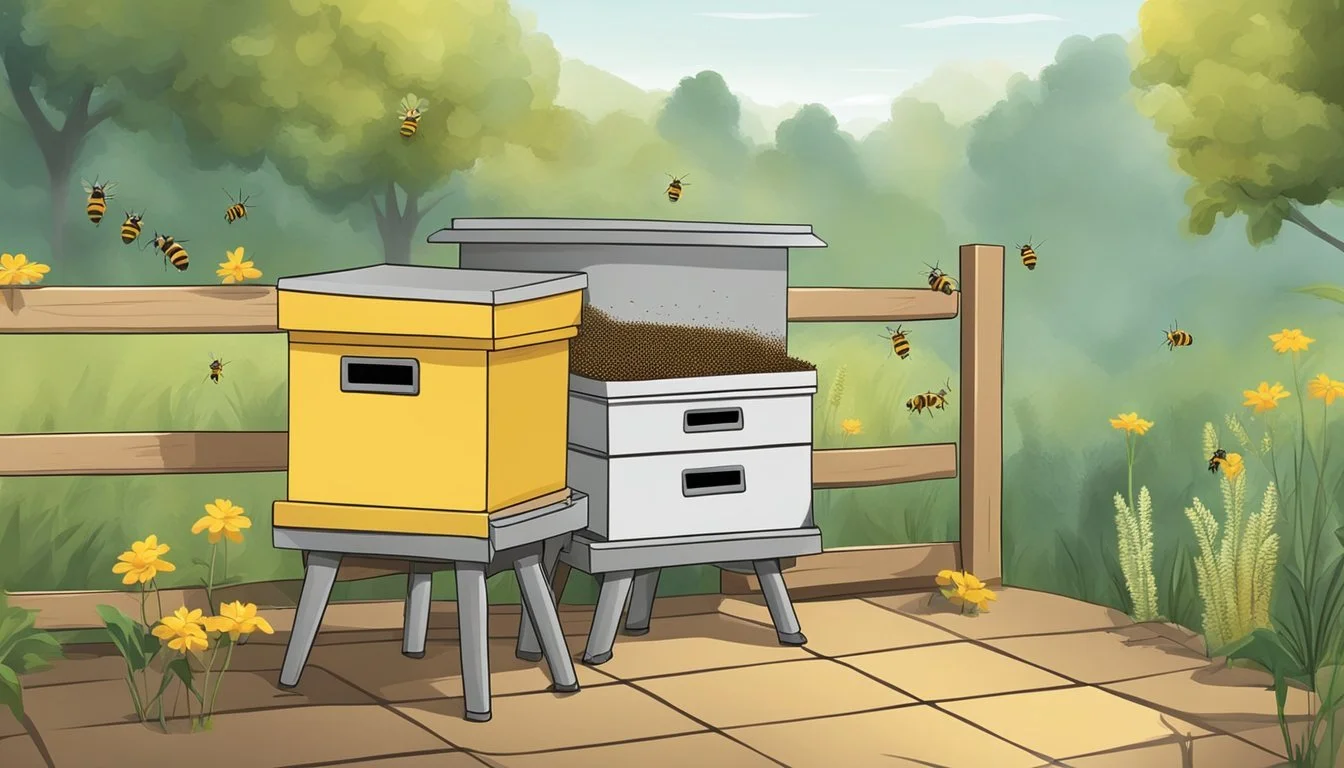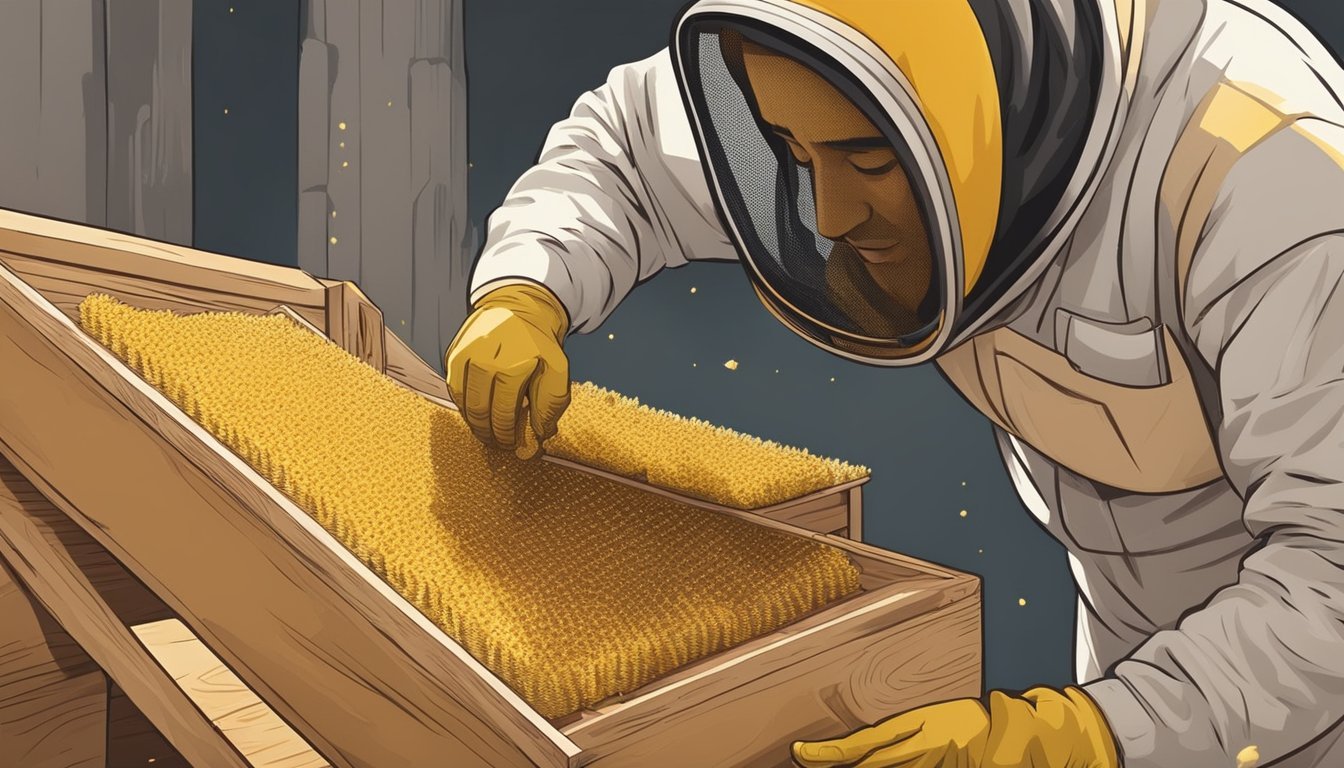The Ultimate Guide to Using Bee Brush for Gentle Bee Removal during Inspections
Essential Tips for Beekeepers
A bee brush is an essential tool in the realm of beekeeping, valued for its ability to facilitate the gentle removal of bees during hive inspections. As beekeepers manage their hives, they encounter situations where bees must be moved from certain areas, such as honeycombs, to examine the health of the hive or during honey extraction processes. The bee brush serves this purpose with its soft bristles, designed specifically to be gentle on the bees, ensuring the safety of these crucial pollinators while allowing the beekeeper to perform necessary maintenance.
Crafted with long, pliable, non-rigid bristles, the bee brush softly sweeps bees away from surfaces without causing harm. Beekeepers employ a calm and measured technique with the brush to minimize stress on the bees. In conjunction with other beekeeping practices such as using smoke to pacify bees, the brush is part of a cautious approach that prioritizes the well-being of the hive. The use of the brush demonstrates a beekeeper’s dedication not only to the productivity of the hive but also to the consideration of the insects’ welfare.
Essentials of Bee Brush Use
A bee brush is an indispensable tool for any beekeeper looking to perform hive inspections with minimal stress to the bees. Understanding the components of the bee brush and selecting the appropriate type are key to its effective use.
Understanding the Bee Brush
The bee brush is designed to remove bees gently from surfaces within the hive, such as the frames, during inspections or when harvesting honey. It typically features long, soft bristles which are necessary to stroke the bees away without causing them harm. The bristles are non-ridged, providing a smooth glide over bees and hive surfaces. Effective use involves short, soft strokes in a flicking motion rather than long, dragging sweeps to prevent injuring the bees or invoking a defensive response.
Main Components of a Bee Brush:
Bristle Length: Must be long enough to cover sufficient surface area without applying too much pressure.
Bristle Texture: Should be soft and pliable to ensure bees are not harmed.
Handle: Firm and comfortable to hold for precise control.
Selecting the Right Bee Brush
The selection of a bee brush can greatly affect the well-being of the honeybee colony. A high-quality brush is typically made with soft, synthetic bristles or natural fibers like horsehair. Synthetic bristles often offer durability and the right balance of softness, while natural fibers provide gentleness that is favored by some beekeepers.
Considerations When Choosing a Bee Brush:
Bristle Material: Can be synthetic or natural, with a preference for durability and gentleness.
Bristle Density: Enough to move bees efficiently without being too harsh.
Ease of Cleaning: The brush should be easy to clean since it can get sticky with propolis and honey.
When using the bee brush, beekeepers should prioritize the health of the bees by employing a technique that is effective yet non-threatening. The action should be more of a gentle flick rather than a forceful scrub.
The Role of Bee Brush in Hive Inspections
A bee brush serves as a critical tool for hive management, allowing beekeepers to conduct inspections and manage colonies with minimal stress to the bees.
Inspecting the Hive with Care
When a beekeeper examines the hive, it is essential to minimize disruption to the bees and the hive structure. Frames need to be removed with caution to avoid damaging the honeycomb and beeswax. During this process, frames are often densely populated with bees working on the comb, which necessitates the use of a bee brush for safe bee removal. The brush's soft bristles gently persuade bees to move, preventing harm to the delicate comb they have constructed and reducing the risk of crushing bees as frames are manipulated.
Gentle Removal of Bees from Frames
Using a bee brush effectively requires a soft, deliberate touch. By lightly sweeping over the bees on the frames, beekeepers can clear an area to inspect the condition of honey stores and brood patterns without causing harm. The practice promotes a calm environment and prevents the accidental dislodging of beeswax or the spoiling of honey. A beekeeper must exhibit patience, using the brush sparingly to avoid aggravating the bees and to preserve the intricate ecosystem within each frame.
Integrating Bee Brush into Beekeeping Equipment
The bee brush is a pivotal tool for beekeepers, providing a gentle method for removing bees during hive inspections. It is vital that this tool is effectively integrated into the beekeeper's equipment set for seamless bee management.
Complementing Your Beekeeping Tools
A bee brush should complement other beekeeping tools for efficient hive management. When integrated with a smoker, which calms bees, the bee brush can be used to displace bees without causing them stress. The hive tool—essential for prying apart frames—can then be used with greater ease, preventing crushing of bees. Using a bee brush in conjunction with a bee suit allows the beekeeper to work closely within the hive without aggravating the bees, making the task safer and more effective.
Maintenance and Cleaning of Bee Brushes
Proper maintenance of a bee brush is as crucial as its use. After each inspection, one should remove debris and bee residue from the brush. This can typically be done by:
Gently shaking the brush to dislodge loose particles.
Washing with soapy water if the debris is persistent.
Rinsing thoroughly and allowing it to air dry to prevent mold growth.
Periodic inspection for wear and damage ensures that the brush remains effective and safe to use around the bees. A damaged or overly stiff brush can harm bees or become inefficient at removing them from surfaces. Regular cleaning also prevents the potential spread of pathogens between hives.
Safety and Protection during Hive Management
When managing beehives, it is crucial for beekeepers to prioritize safety and understand bee behavior to ensure a gentle and effective bee removal during inspections.
Using Protective Clothing
Beekeepers must wear appropriate protective clothing to prevent stings and ensure calm interactions with the bees. Standard safety gear includes:
Gloves: Durable, yet flexible gloves protect hands and wrists while allowing for delicate manipulation of the hive components.
Veil: A veil is essential to shield the face and neck without obstructing vision to maintain situational awareness.
Bee Behavior and Safe Handling
Understanding bee behavior is key to safe hive management. Bees are generally non-aggressive pollinators but may perceive certain actions as threats. Here are specific behaviors to consider:
Gentle Movements: Rapid movements can agitate bees; therefore, beekeepers should use slow and smooth actions when utilizing the bee brush.
Approach Angles: Positioning oneself to work with the hive from the side or back can minimize disturbance, as bees primarily defend the entrance.
Utilizing this knowledge, beekeepers can create a safer environment for themselves and the bees, leading to successful and productive hive management.
Additional Techniques for Bee Removal and Honey Harvest
This section explores alternative methods for removing bees without using a bee brush as well as techniques to optimize honey harvesting for better yield and efficiency.
Alternatives to the Bee Brush
In instances where beekeepers prefer not to use a bee brush, several other methods can be employed for bee removal. Shaking the frames is a common technique, where beekeepers give the frames a gentle yet firm shake to dislodge bees back into the hive. However, one should be cautious to prevent excessive agitation of the bees or damage to the comb.
Another method involves the use of a bee blower, an effective tool that gently blows the bees off the frames. It's important that this is done with care to avoid harming the bees. Some beekeepers use chemicals as bee repellents, but this should be executed by adhering to guidelines that ensure the safety and health of both bees and consumers.
Optimizing Honey Harvesting
When it comes to harvesting honey, the use of a honey extractor is a pivotal step for yielding a higher quantity of honey without damaging the comb, which can be reused by the bees. Extractors can be manual or electric, and their size will vary according to the scale of the operation.
The process of extracting honey often begins with the removal of wax cappings using an uncapping knife or fork. This exposes the honey, enabling it to be spun out of the comb by centrifugal force within the extractor. For a successful harvest, ensuring the frames are uncapped evenly can lead to more efficient extraction and less waste.
Advanced Beekeeping Practices
Advanced beekeeping requires a deep understanding of hive dynamics and a meticulous approach to honey production. Proficiency in managing complex hive structures and the biochemistry of honey yields significant benefits when inspecting and caring for hives.
Understanding Complex Hive Structures
Expert beekeepers recognize that a beehive is more than just an assortment of wax and honey. The complex structure of a hive is meticulously engineered by honey bees, tailored to ensure the survival and productivity of the colony. Here are some key components:
Hive Box: It is the core structure, housing multiple frames where bees build comb and the queen bee lays eggs.
Comb: This is the matrix of hexagonal cells made of beeswax, used for storing honey and rearing brood.
Propolis: Created from resins, this substance is used by bees to seal cracks and strengthen the hive structure. Its antiseptic properties also help maintain colony health.
Hive Entrance: The gateway regulates traffic of honey bees into and out of the hive and is crucial for managing hive temperature and defense.
By carefully observing these structures during inspections with tools such as the bee brush, beekeepers gently remove bees without causing stress, which is crucial for maintaining a healthy and productive colony.
The Science of Beekeeping and Honey Production
The process of honey production is a clear demonstration of the sophistication of honey bees. Beekeepers must have a sound understanding of these processes:
Nectar Collection: Honey bees visit flowers, collecting nectar that is enzymatically transformed into honey within their bodies.
Honey Storage: They deposit nectar into the comb cells, where it eventually dehydrates into honey.
Honey Capping: Once the honey is fully processed, bees cap the cells with a thin layer of wax, sealing the honey for later use.
Advanced beekeeping practices involve monitoring these processes, ensuring that the queen bee is healthy and productive, and that the hive remains free from diseases and pests. During hive inspections, a bee brush is used to gently remove bees from combs without disrupting the hive or damaging the comb, facilitating a harmonious inspection and honey extraction.





